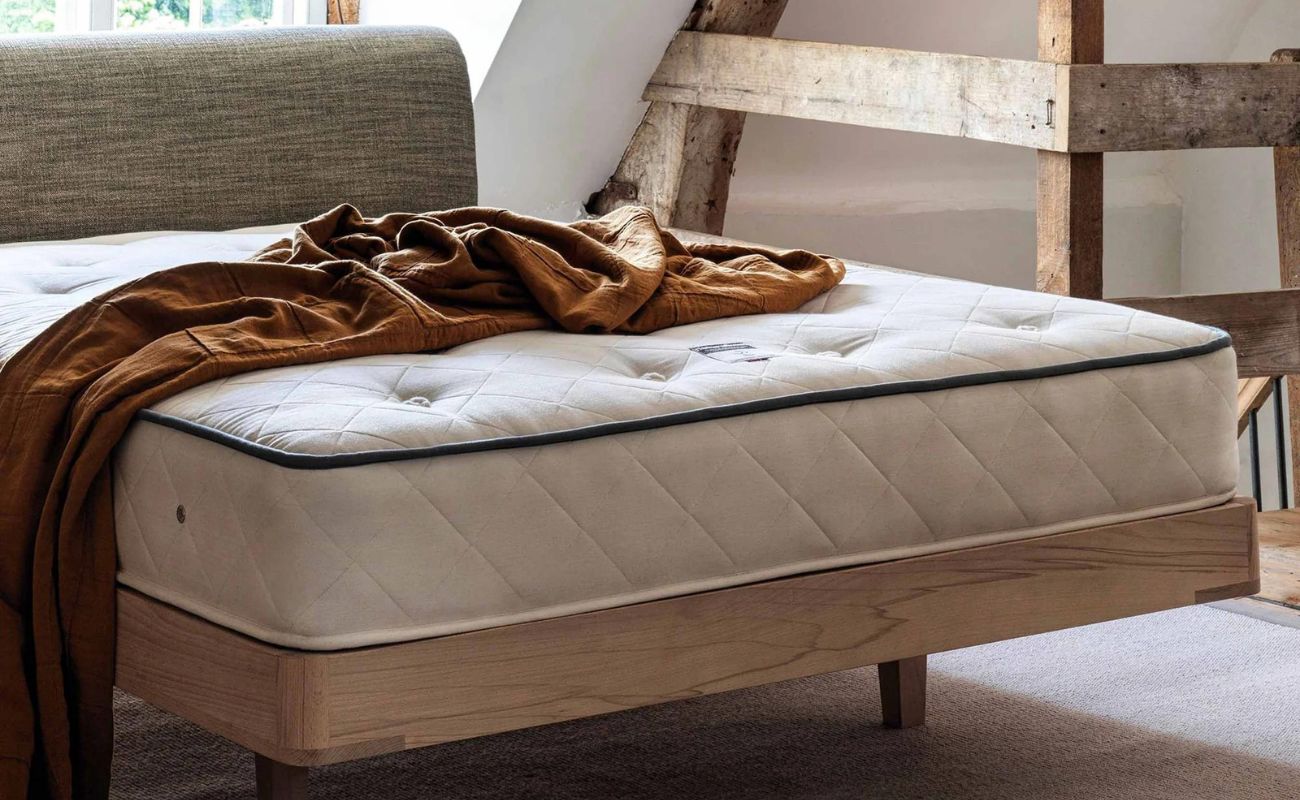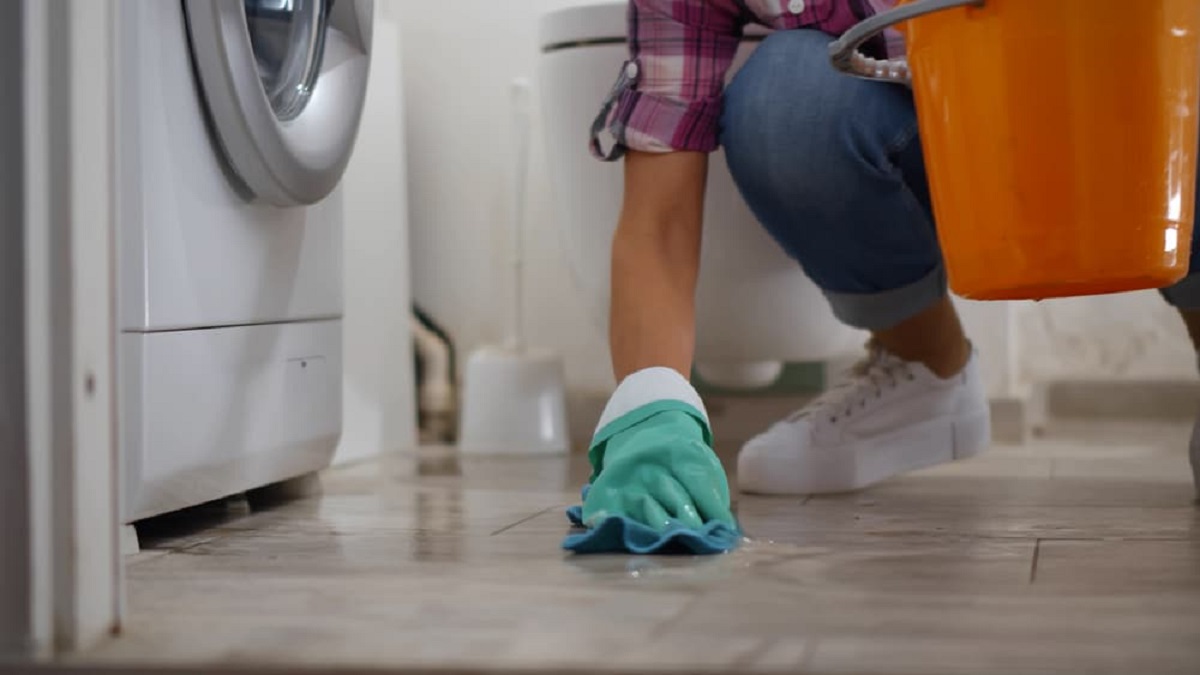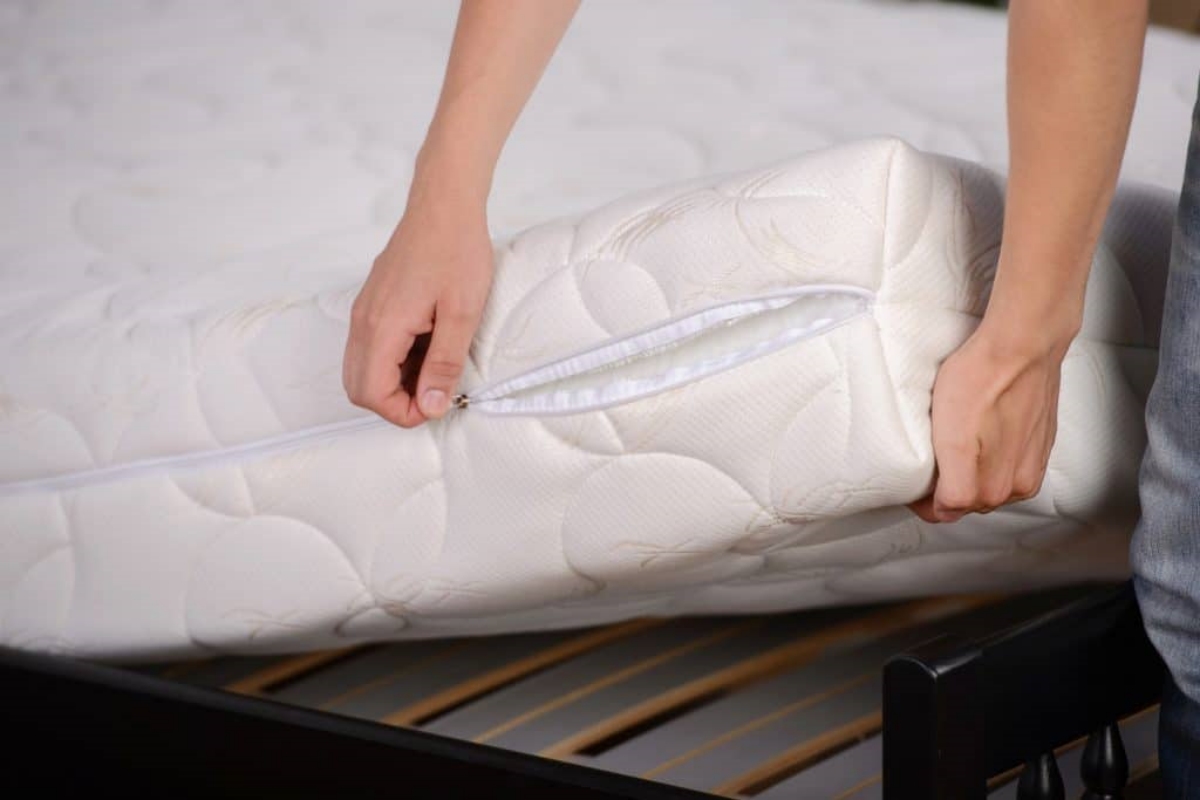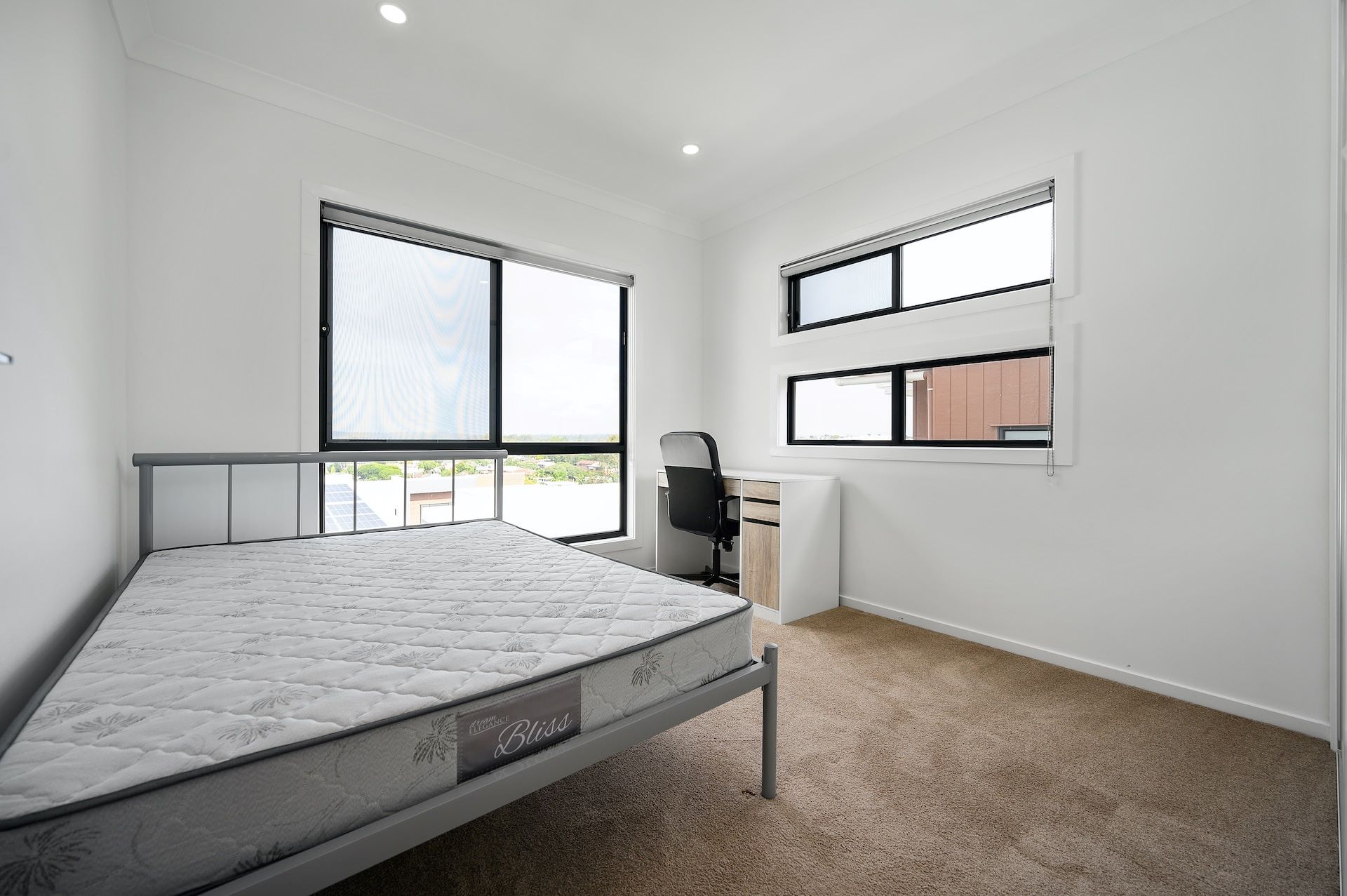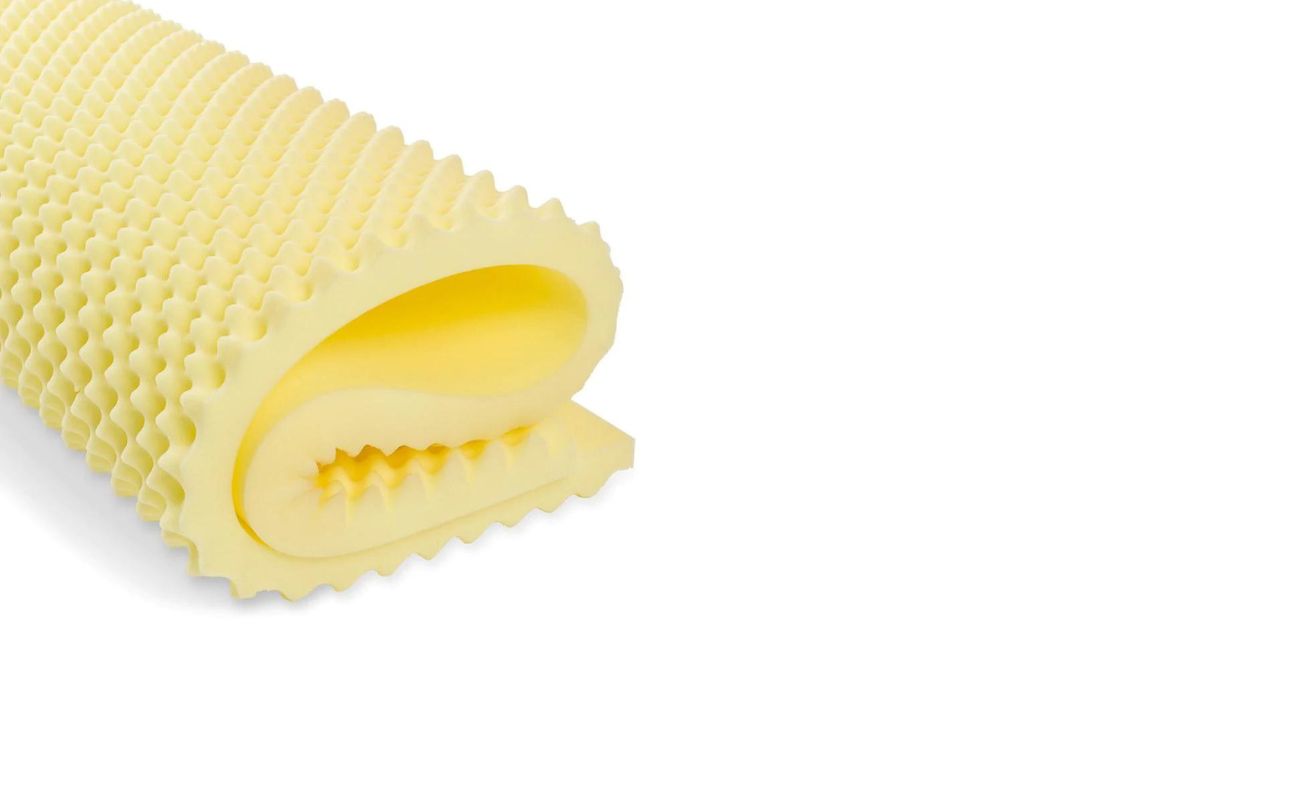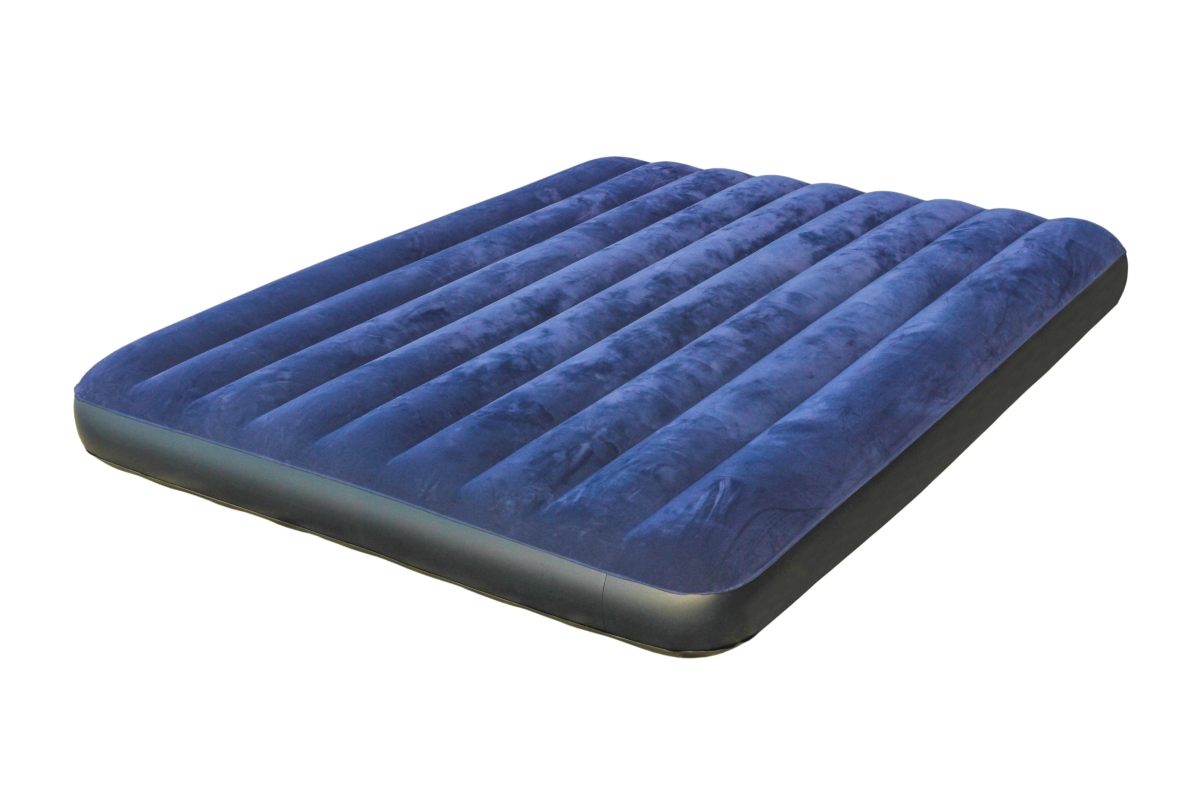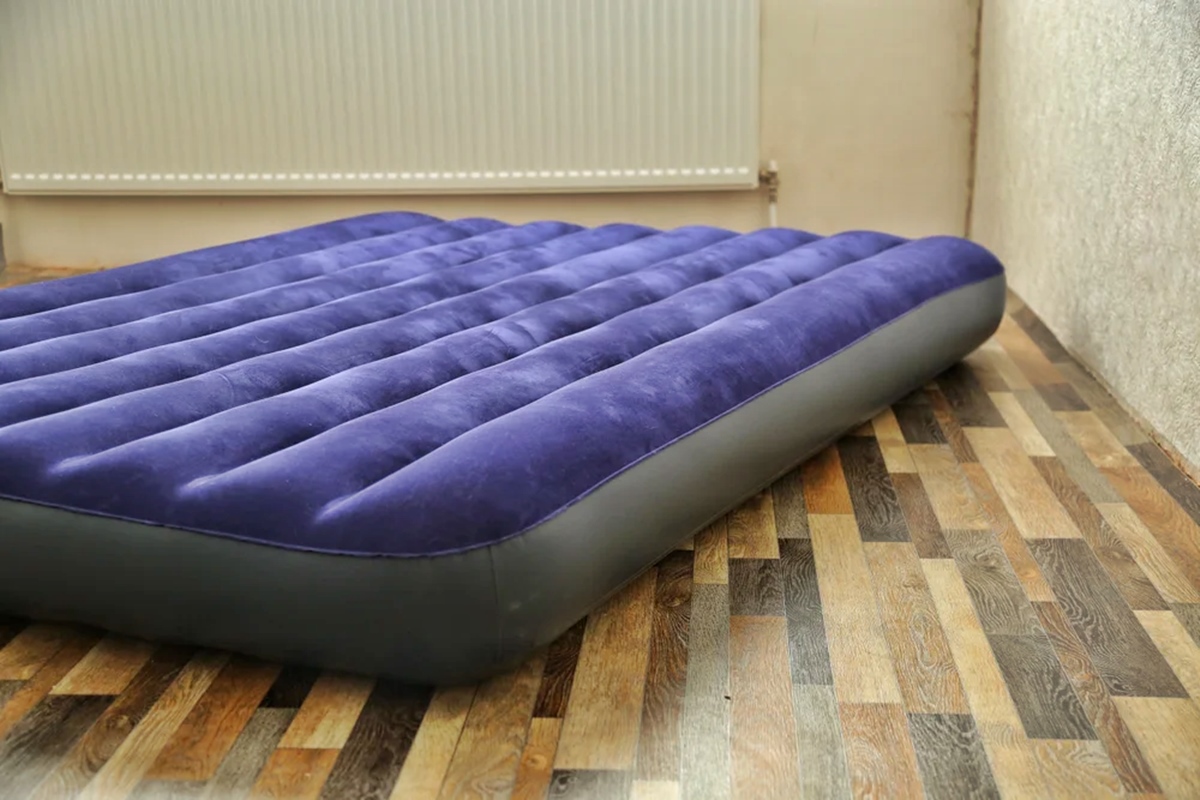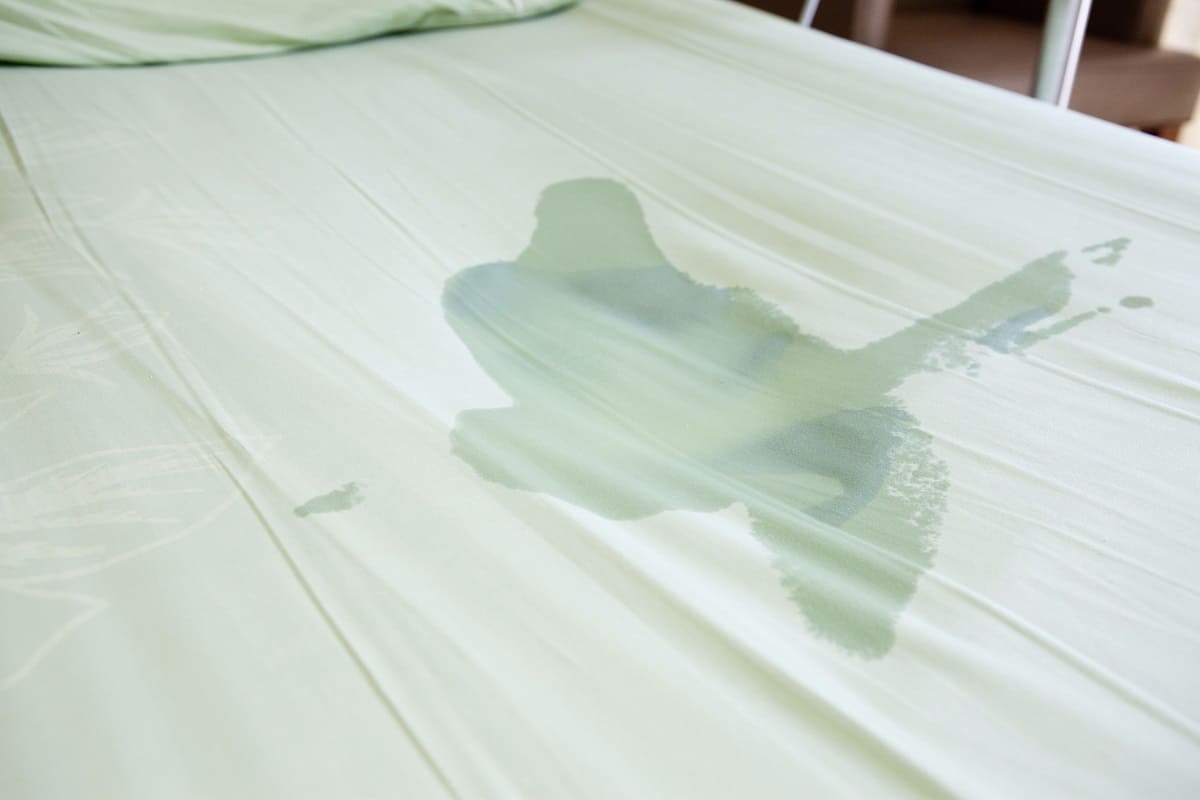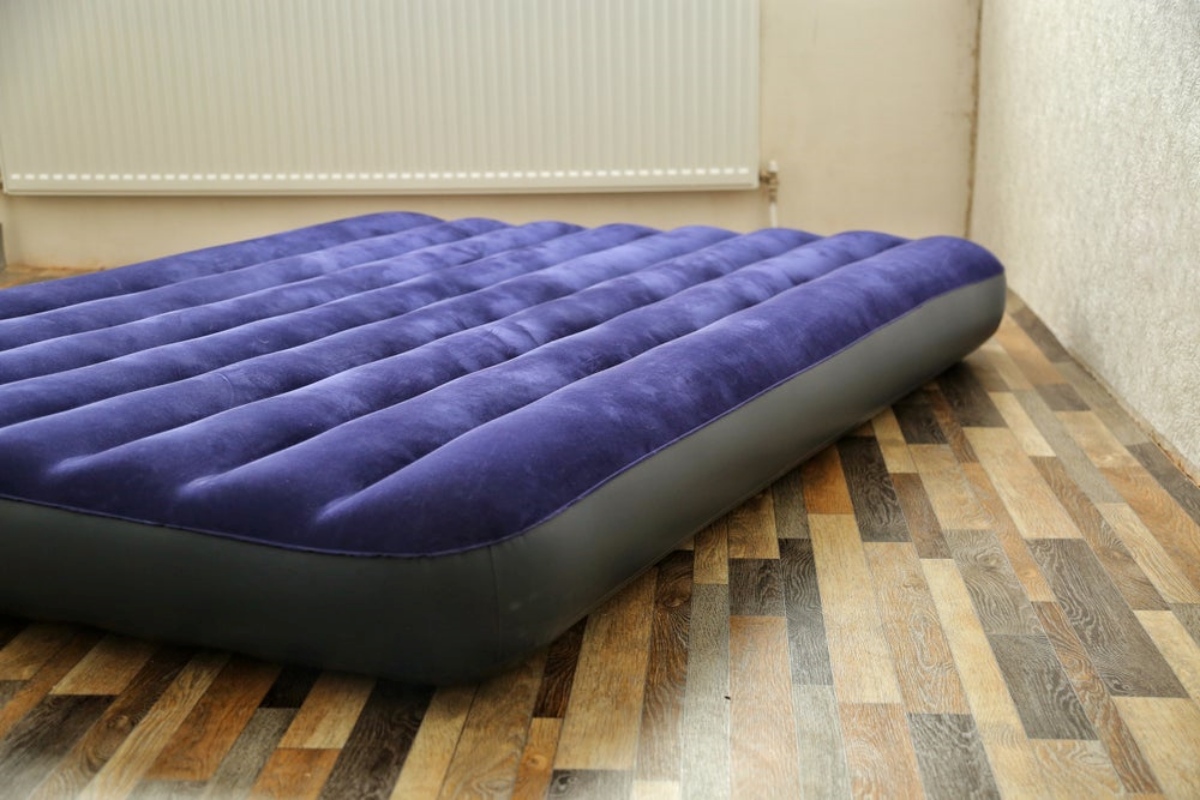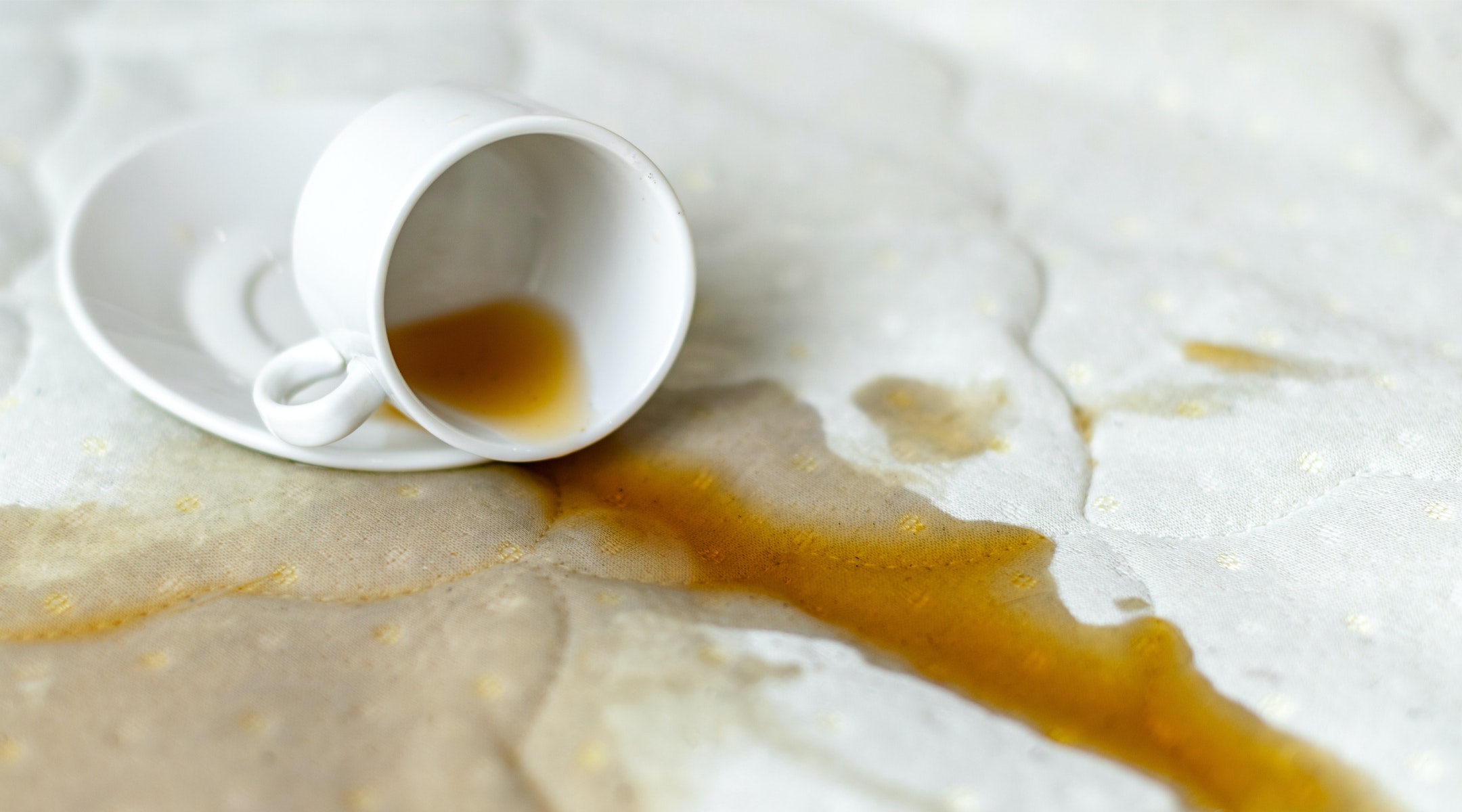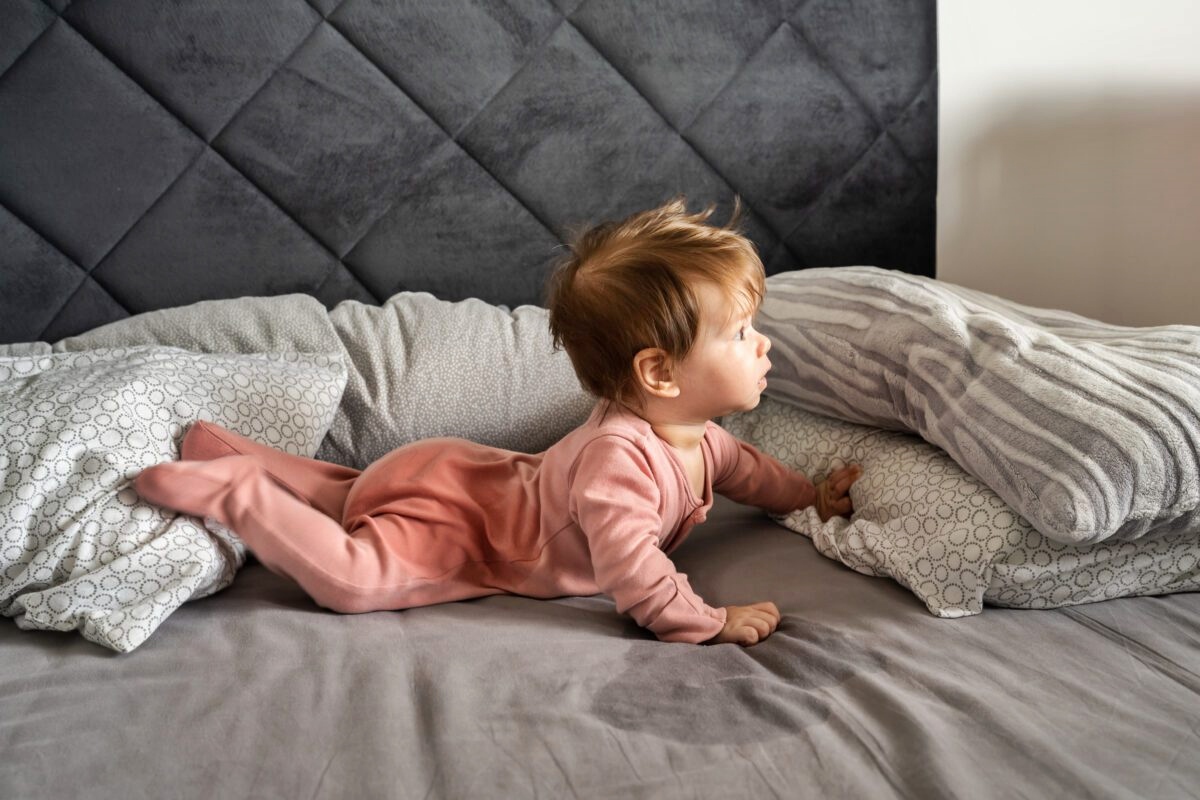Home>Furniture>Bedroom Furniture>Why Is My Mattress Wet Underneath
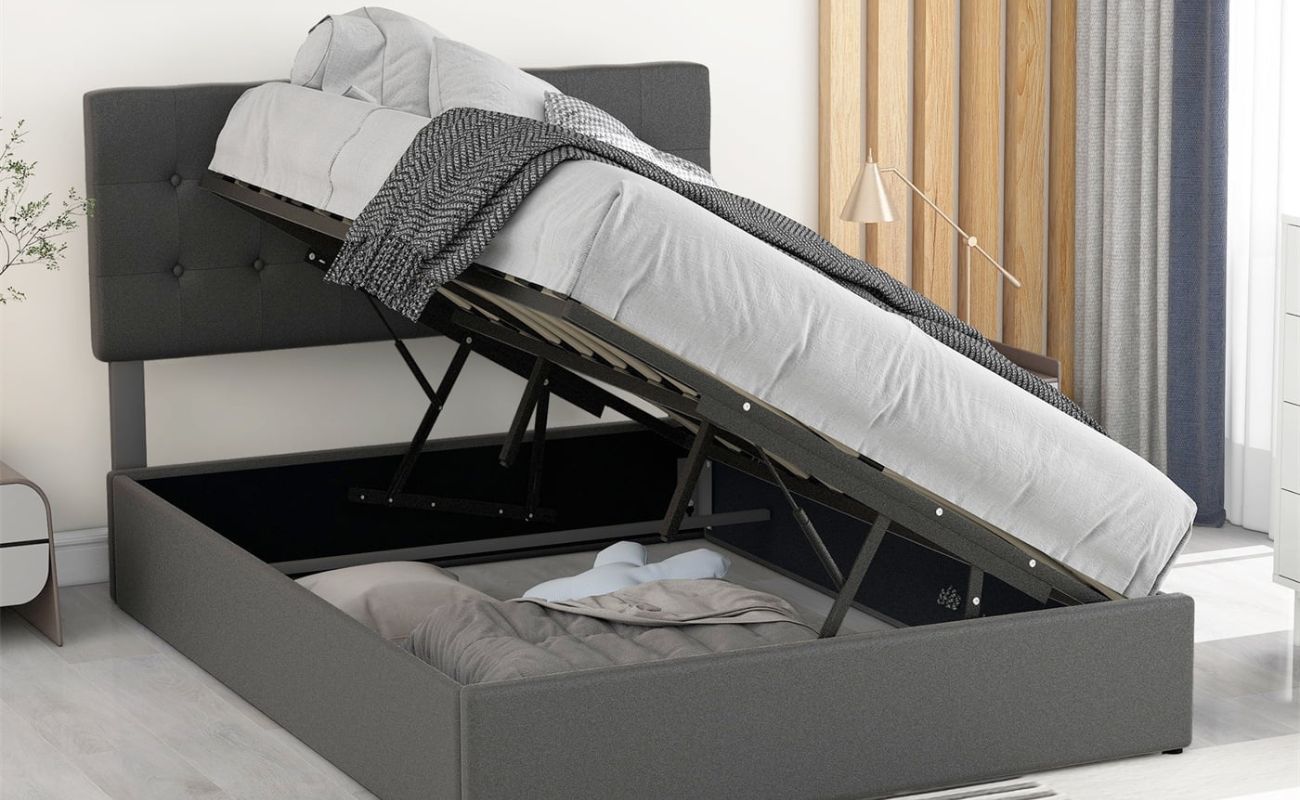

Bedroom Furniture
Why Is My Mattress Wet Underneath
Modified: September 1, 2024
Discover the reasons behind a wet mattress underneath and find out how you can prevent this common issue. Explore our tips and solutions for maintaining your bedroom furniture.
(Many of the links in this article redirect to a specific reviewed product. Your purchase of these products through affiliate links helps to generate commission for Storables.com, at no extra cost. Learn more)
Introduction
Have you ever woken up to find your mattress wet underneath? It can be quite unsettling and leave you wondering what could be causing it. A wet mattress not only disrupts your sleep but can also lead to potential health issues and damage to your bedroom furniture. Understanding the reasons behind a wet mattress is crucial for addressing the issue effectively. In this article, we will explore the possible causes of a wet mattress and provide tips on how to prevent it from happening.
A wet mattress can occur due to various reasons, ranging from night sweats and spills to condensation and plumbing leaks. Each cause requires a different approach in terms of prevention and mitigation. By identifying the root cause, you can take appropriate steps to keep your mattress dry and maintain its longevity.
In the following sections, we will delve deeper into the possible causes of a wet mattress and offer practical suggestions for preventing or addressing each issue. By following these tips, you can ensure that your mattress stays dry, comfortable, and free from potential damage.
Key Takeaways:
- Protect your mattress with a waterproof mattress protector to prevent moisture from night sweats, spills, and accidents, ensuring easier cleaning and maintenance while extending its lifespan.
- Address leaks, condensation, and mold growth promptly to maintain a dry and comfortable mattress, promoting a healthier and more enjoyable sleep experience.
Read more: Why Is My Bathtub Leaking Underneath
Possible Causes of a Wet Mattress
When you find your mattress wet underneath, several factors could be contributing to the issue. Below, we explore some of the common causes of a wet mattress:
- Night Sweats: Night sweats are a common occurrence, especially during hot summer nights or for individuals with certain health conditions. Excessive sweating during sleep can penetrate through the sheets and mattress protector, resulting in a wet mattress.
- Urinary Incontinence: For individuals who struggle with urinary incontinence, it is not uncommon to experience incidents during sleep. Accidental leakage can result in a wet mattress, leading to discomfort and potential hygiene concerns.
- Spills or Accidents: Sometimes, a wet mattress is simply the result of spills or accidents that happen in bed. Whether it’s a spilled beverage or a pet accident, liquids can penetrate the mattress, leading to wetness and potential stains.
- Condensation: In areas with high humidity levels, condensation can occur on the surface of mattresses. This is especially common if the mattress is in direct contact with a cold surface, such as a concrete floor. Over time, condensation can lead to a damp mattress.
- Leaking Plumbing or Roof: A leaking pipe or roof can cause water to seep into your sleeping environment. If your mattress is in close proximity to the leak, it may become wet due to water exposure.
- Mold or Mildew Growth: If your mattress is being stored in a damp or humid environment, it becomes susceptible to mold or mildew growth. This can result in a wet mattress and contribute to potential health issues.
By identifying the specific cause of your wet mattress, you can take appropriate measures to address the issue and prevent it from recurring. In the following sections, we will provide tips and strategies for each of these causes, allowing you to keep your mattress dry and in optimal condition.
Night Sweats
Night sweats can be a common occurrence for many individuals, especially during warm summer nights or as a result of certain medical conditions. Excessive sweating during sleep can leave your mattress wet and uncomfortable. Here are some tips to manage night sweats and prevent your mattress from getting soaked:
- Choose breathable bedding: Opt for bedding made from natural fibers such as cotton or bamboo. These materials allow for better airflow and moisture evaporation, reducing the chances of your mattress becoming wet.
- Use moisture-wicking mattress protectors: Invest in a mattress protector specifically designed to wick away moisture. These protectors have a waterproof layer to prevent liquids from seeping into the mattress while ensuring that sweat is effectively absorbed and evaporated.
- Consider cooling mattresses and mattress toppers: Cooling mattresses and toppers are designed to regulate body temperature and dissipate heat. They can help mitigate excessive sweating during the night, keeping your mattress dry and comfortable.
- Use moisture-absorbing products: Place moisture-absorbing products such as silica gel packets or baking soda near your bed. These will help absorb excess moisture in the air, reducing the likelihood of your mattress becoming wet.
- Adjust the temperature and humidity in your bedroom: Keep your bedroom at a comfortable temperature and humidity level. Use fans or an air conditioner to regulate the temperature, and consider using a dehumidifier to reduce moisture in the air.
- Practice good sleep hygiene: Incorporate good sleep hygiene practices, such as wearing breathable clothing to bed and avoiding heavy meals and caffeine before sleep. These practices can help minimize night sweats and keep your mattress dry.
By implementing these tips, you can effectively manage night sweats and prevent your mattress from becoming wet. It’s essential to prioritize your comfort and sleep quality while ensuring the longevity of your mattress.
Urinary Incontinence
Dealing with urinary incontinence can be challenging, but it’s important to find effective solutions to prevent your mattress from getting wet. Here are some strategies to address urinary incontinence and protect your mattress:
- Invest in a waterproof mattress protector: A waterproof mattress protector is a must-have if you struggle with urinary incontinence. Look for one that is specifically designed to provide a barrier against liquids, ensuring that your mattress remains dry.
- Use absorbent bed pads: Consider using absorbent bed pads on top of your mattress protector. These pads are designed to quickly absorb and lock in moisture, providing an extra layer of protection against leaks.
- Explore incontinence products: There are various incontinence products available in the market, such as adult diapers or disposable briefs. These can offer an additional layer of protection and give you peace of mind during sleep.
- Establish a nighttime routine: Prior to going to bed, make sure to empty your bladder completely. This will help reduce the likelihood of accidents during the night and prevent your mattress from getting wet.
- Consult a healthcare professional: If urinary incontinence persists or worsens, it’s crucial to consult a healthcare professional. They can provide guidance on managing the condition effectively and suggest appropriate treatment options.
- Consider lifestyle changes: Certain lifestyle adjustments can help manage urinary incontinence. For example, reducing fluid intake before bedtime and incorporating pelvic floor exercises into your daily routine can strengthen the muscles responsible for bladder control.
Remember, addressing urinary incontinence requires patience and a proactive approach. By implementing these tips and seeking professional advice, you can minimize accidents and protect your mattress from becoming wet.
Spills or Accidents
Spills or accidents can happen to anyone, and when they occur in bed, they can quickly turn your mattress into a soggy mess. Here are some steps you can take to handle spills or accidents and prevent your mattress from becoming wet:
- Act quickly: As soon as a spill or accident occurs, act fast to minimize the amount of liquid that seeps into your mattress. Grab absorbent towels or napkins and gently blot the area to soak up as much liquid as possible. Avoid rubbing, as this can spread the liquid and make the situation worse.
- Remove bedding: Strip off the bedding, including sheets, pillowcases, and mattress protectors. If they have absorbed any liquid, place them in the washing machine for cleaning.
- Clean the mattress: Depending on the severity of the spill or accident, you may need to clean the affected area of the mattress. Use a mixture of mild detergent and warm water to gently scrub the spot. Alternatively, you can also use a specialized mattress cleaner. Be sure to follow the manufacturer’s instructions and allow the mattress to dry thoroughly before putting on fresh bedding.
- Consider mattress stain removers: If the spill leaves behind stubborn stains, you can try using a mattress stain remover specifically designed to eliminate tough stains. Test the product on a small, inconspicuous area first to ensure it doesn’t damage the mattress fabric or color.
- Air out the mattress: After cleaning the mattress, allow it to dry completely before putting on new bedding. Open windows, run fans, or use a dehumidifier to enhance air circulation and speed up the drying process.
- Use a waterproof mattress protector: To prevent future spills or accidents from reaching your mattress, invest in a waterproof mattress protector. These protectors act as a barrier against liquid penetration and can be easily removed and washed when needed.
Remember, accidents happen, and the key is to address them promptly and effectively. By following these steps, you can handle spills or accidents without letting your mattress become permanently wet or damaged.
Read more: What Goes Underneath The Mattress
Condensation
Condensation can be a surprising cause of a wet mattress, especially in areas with high humidity levels. If your mattress is in direct contact with a cold surface or placed in a room with inadequate ventilation, condensation can occur, leading to a damp mattress. Here are some tips to reduce condensation and keep your mattress dry:
- Improve ventilation: Ensure proper airflow in your bedroom by opening windows or using a fan. This helps to reduce humidity levels and prevent condensation from forming on your mattress.
- Elevate the mattress: If your mattress is directly on the floor or a cold surface, consider elevating it with a bed frame or platform. This creates a gap between the mattress and the ground, allowing air to circulate and reducing the chances of condensation.
- Use a dehumidifier: In areas with high humidity, a dehumidifier can be a valuable investment. It helps to remove excess moisture from the air, preventing condensation and keeping your mattress dry.
- Insulate the cold surface: If condensation occurs due to a cold surface such as a concrete floor, consider insulating it. Use rugs or carpeting to create a barrier between the floor and your mattress, reducing the transfer of cold temperatures.
- Allow airflow around the mattress: If possible, avoid pushing your mattress against the wall or tightly sandwiching it between heavy furniture. This restricts airflow and can contribute to condensation. Maintain some space around the mattress to promote better air circulation.
- Monitor and control temperature: Keep your bedroom at a comfortable temperature to reduce the likelihood of condensation. Avoid extreme temperature differences between the room and the mattress, as this can create the perfect conditions for condensation to form.
By implementing these measures, you can minimize condensation and maintain a dry mattress. It’s important to create an environment that discourages the buildup of moisture, ensuring the longevity and comfort of your bed.
Leaking Plumbing or Roof
If you find your mattress wet underneath and there’s no direct cause like spills or accidents, it’s crucial to investigate the possibility of leaking plumbing or a roof. Water leaks can lead to significant damage not only to your mattress but also to the overall structure of your home. Here are steps you can take to address leaking plumbing or roof issues:
- Inspect for visible signs of leaks: Check your bedroom and surrounding areas for any visible signs of water damage, such as water stains on the walls or ceiling. This can help identify the source of the leak.
- Call a professional plumber: If you suspect a plumbing leak, it’s best to consult a professional plumber. They can inspect your plumbing system, identify the source of the leak, and repair it accordingly.
- Check the roof: If the source of the water seems to be from above, inspect your roof for any visible damage or signs of leakage. Hire a professional roofer to assess and repair any issues to prevent further water damage.
- Address the water damage: If your mattress has been affected by a leaking plumbing or roof, it’s essential to mitigate the water damage promptly. Remove the wet bedding, and air out the mattress to prevent the growth of mold or mildew.
- Use fans or dehumidifiers: Set up fans or dehumidifiers in the affected area to aid in drying out the mattress and the surrounding environment. Proper ventilation and reduced humidity levels can prevent further moisture buildup.
- Consider professional cleaning: Depending on the severity of the water damage, you may want to consider professional mattress cleaning services to ensure thorough drying and sanitation.
- Fix the underlying issue: Once the source of the leaking plumbing or roof has been identified and repaired, monitor your mattress and the surrounding area to ensure that no further water damage occurs.
It’s crucial to take immediate action when dealing with leaking plumbing or a roof to prevent further damage. By addressing the issue promptly and ensuring proper repairs, you can protect your mattress and maintain a healthy sleeping environment.
Mold or Mildew Growth
Mold or mildew growth on your mattress can lead to a wet and unpleasant sleeping surface. It can also pose potential health risks. Mold and mildew thrive in humid and damp environments, and if your mattress is stored or used in such conditions, it becomes susceptible. Here are some steps to prevent and address mold or mildew growth:
- Ensure proper ventilation: Good airflow is crucial in preventing mold and mildew. Keep your bedroom well-ventilated by opening windows, using fans, or utilizing air conditioning. This helps to reduce humidity and prevent moisture buildup.
- Use a dehumidifier: In areas with high humidity, consider using a dehumidifier to remove excess moisture from the air. This helps create an environment where mold and mildew cannot thrive.
- Avoid storing a damp mattress: If you need to store your mattress, ensure that it is completely dry before doing so. A damp mattress in storage can become a breeding ground for mold and mildew. Clean and dry the mattress thoroughly before storing it in a dry and well-ventilated space.
- Inspect for signs of mold or mildew: Regularly inspect your mattress for any visible signs of mold or mildew. Look for dark spots, discoloration, or a musty odor. If you notice any of these signs, take immediate action to address the problem.
- Spot clean with a solution: If you spot mold or mildew growth on your mattress, you can try spot cleaning it. Create a solution of equal parts water and vinegar or hydrogen peroxide, and gently dab the affected area with a clean cloth. Be sure to test the solution on a small, inconspicuous area first to ensure it doesn’t damage the mattress fabric or color.
- Consult a professional cleaner: If the mold or mildew growth is extensive or persistent, it’s best to consult a professional mattress cleaner. They have the expertise and specialized equipment to thoroughly clean and sanitize the mattress, effectively eliminating mold and mildew.
- Prevent future mold or mildew growth: After addressing the issue, take preventive measures to ensure that mold and mildew do not return. This includes proper ventilation, regular mattress cleaning, and maintaining a dry sleeping environment.
By implementing these steps, you can protect your mattress from mold and mildew growth, ensuring a dry and healthy sleep surface.
Tips for Preventing a Wet Mattress
To ensure that your mattress stays dry and in optimal condition, it’s important to take preventive measures. Here are some tips to help you prevent a wet mattress:
- Use a mattress protector: Invest in a high-quality mattress protector that is waterproof and designed to fit your mattress. This acts as a barrier against spills, accidents, and other liquid sources, preventing them from seeping into your mattress.
- Choose moisture-wicking bedding: Opt for bedding made from breathable and moisture-wicking materials such as cotton or bamboo. These fabrics promote airflow and evaporation, reducing the likelihood of your mattress becoming wet from night sweats or humidity.
- Keep liquids away from the bed: Avoid consuming liquids in bed, especially near the mattress. Accidental spills can quickly make your mattress wet, so it’s best to enjoy beverages or snacks in other areas of your home.
- Address night sweats or excessive sweating: If you experience night sweats or excessive sweating during sleep, consider using moisture-wicking sleepwear and bedding. Additionally, practice good sleep hygiene habits to help manage the sweating.
- Respond quickly to spills or accidents: If a spill or accident occurs, act promptly to limit the liquid’s penetration into the mattress. Blot the area with absorbent towels or napkins and remove any bedding that may have absorbed liquid for immediate cleaning.
- Ensure proper ventilation: Maintain good air circulation in your bedroom by opening windows, using fans, or employing an air conditioner. Adequate ventilation helps to reduce humidity levels and prevent condensation on your mattress.
- Inspect for plumbing or roof leaks: Regularly check your bedroom and surrounding areas for any signs of leaking plumbing or roof damage. Address any issues promptly to prevent water from seeping into your mattress.
- Store your mattress properly: If you need to store your mattress, ensure it is completely dry before doing so. Clean and dry the mattress thoroughly and store it in a dry, well-ventilated area, preferably with a mattress cover or bag for added protection.
- Maintain your bedroom’s humidity level: Use a dehumidifier in areas with high humidity to reduce moisture in the air and prevent dampness in your mattress. Aim for a comfortable humidity level between 40% and 50%.
- Regularly clean and inspect your mattress: Implement a routine of regularly cleaning and inspecting your mattress. Vacuum the mattress surface to remove dust and allergens, and check for any signs of mold, mildew, or damage that may lead to a wet mattress.
By following these tips, you can significantly reduce the chances of a wet mattress and prolong its lifespan. Prevention is key when it comes to maintaining the cleanliness and integrity of your mattress.
Check for any signs of a leak or spill on the mattress surface. If there are no visible issues, it could be due to condensation or humidity. Consider using a mattress protector to prevent future moisture buildup.
Read more: Why Is The Inside Of My Dryer Wet
Using a Mattress Protector
A mattress protector is an essential investment for keeping your mattress dry and protected. It serves as a barrier between your mattress and potential sources of moisture, such as spills, sweat, and accidents. Here are some reasons why using a mattress protector is important:
- Waterproof protection: A high-quality mattress protector is designed to be waterproof, preventing liquid from seeping into your mattress. It creates a protective layer that shields your mattress from spills, stains, and other sources of moisture.
- Easier cleaning and maintenance: A mattress protector is removable and machine-washable, making it easy to clean and maintain. Instead of having to clean your entire mattress in case of spills or accidents, you can simply remove and wash the mattress protector.
- Protection against allergens and dust mites: A mattress protector not only guards against moisture but also acts as a barrier against allergens and dust mites. This is especially beneficial for individuals with allergies or asthma, as it helps to create a cleaner and healthier sleep environment.
- Prolongs mattress lifespan: By using a mattress protector, you can extend the lifespan of your mattress. It prevents the accumulation of stains, odors, and moisture that can lead to premature deterioration of the mattress.
- Preserves warranty: Many mattress warranties require the use of a mattress protector to maintain the validity of the warranty. Using a mattress protector ensures that you comply with the warranty terms and conditions, protecting your investment.
- Added comfort and softness: Some mattress protectors come with additional padding, adding an extra layer of comfort and softness to your mattress. This can enhance your overall sleep experience while still providing the necessary protection.
- Variety of options: There is a wide variety of mattress protectors available, catering to different needs and preferences. You can choose from quilted, fitted, or encasement protectors based on your specific requirements and the level of protection you desire.
When selecting a mattress protector, look for one that is specifically designed to be breathable, hypoallergenic, and of high quality. Ensure that it fits your mattress properly and is easy to clean. By using a mattress protector, you can enjoy a dry, comfortable, and hygienic sleeping environment while safeguarding the longevity of your mattress.
Managing Night Sweats
Night sweats can be bothersome and lead to a wet mattress. While they can be a result of various factors, such as hormonal changes, medical conditions, or environmental factors, there are ways to manage and minimize night sweats to keep your mattress dry. Here are some tips to help you manage night sweats:
- Choose breathable bedding: Opt for bedding made from natural, breathable fabrics such as cotton or bamboo. These materials allow for better airflow and can help wick away moisture from your body, reducing the chances of sweat making your mattress wet.
- Use moisture-wicking sleepwear: Invest in sleepwear that is specifically designed to wick away moisture. Look for fabrics such as moisture-wicking polyester or bamboo fabric that can help keep you dry throughout the night.
- Consider cooling mattresses or mattress toppers: Cooling mattresses or mattress toppers are designed to regulate body temperature and dissipate heat. They can help prevent excessive sweating, keeping you cool and your mattress dry.
- Adjust the temperature and airflow in your bedroom: Keep your bedroom at a comfortable temperature to prevent overheating and excessive sweating during sleep. Use fans or an air conditioner to enhance air circulation and create a cooler sleeping environment.
- Manage stress and anxiety: Stress and anxiety can contribute to night sweats. Incorporate stress-reducing activities into your routine, such as meditation, deep breathing exercises, or yoga, to promote better sleep and reduce the chances of sweating.
- Practice good sleep hygiene: Establish a regular sleep schedule and create a relaxing bedtime routine. Avoid consuming caffeine or heavy meals before bed, as these can increase body temperature and trigger night sweats.
- Stay hydrated: While it may seem counterintuitive, staying hydrated can actually help regulate body temperature and reduce excessive sweating. Drink plenty of water throughout the day to stay hydrated and prevent dehydration-related night sweats.
- Consult a healthcare professional: If night sweats persist or are accompanied by other concerning symptoms, it’s important to consult a healthcare professional. They can help identify the underlying cause and provide appropriate treatment options.
By implementing these tips, you can effectively manage night sweats and minimize the chances of your mattress becoming wet. It’s essential to create a comfortable and cool sleeping environment to promote better sleep quality and keep your mattress dry.
Addressing Urinary Incontinence
Urinary incontinence can lead to wetness in the bed and on your mattress, posing challenges and discomfort. However, there are strategies you can implement to address urinary incontinence and prevent your mattress from becoming wet. Here are some tips to help manage urinary incontinence:
- Use waterproof protection: Invest in a waterproof mattress protector designed specifically for individuals with urinary incontinence. These protectors provide a barrier that prevents urine from seeping into the mattress and can be easily removed and washed when needed.
- Use absorbent products: Consider using absorbent pads or underwear designed for urinary incontinence. These products are specifically designed to quickly absorb and lock away urine, providing an extra layer of protection for your mattress.
- Practice pelvic floor exercises: Strengthening your pelvic floor muscles through exercises like Kegels can improve bladder control and reduce the frequency of urinary incontinence episodes. Consult with a healthcare professional to learn the proper techniques for performing these exercises.
- Create a voiding schedule: Establishing a voiding schedule can help regulate your bathroom trips and minimize the chances of accidents during sleep. Plan regular bathroom breaks before bedtime and throughout the day to empty your bladder.
- Limit fluid intake before bedtime: To reduce the likelihood of nighttime accidents, avoid consuming large amounts of fluids a few hours before bed. However, make sure to stay adequately hydrated throughout the day to maintain overall health.
- Consider behavioral therapies: Techniques such as bladder training and biofeedback therapy can be effective in managing and improving urinary incontinence. Consult with a healthcare professional to explore these options and determine the most suitable approach for your situation.
- Seek medical advice: If urinary incontinence persists or worsens, it’s important to seek medical advice. A healthcare professional can evaluate your condition, identify any underlying causes, and recommend appropriate treatment options, which may include medication or surgical intervention.
Addressing urinary incontinence requires a multifaceted approach. By implementing these strategies, you can better manage and reduce the impact of urinary incontinence on your mattress, ensuring a more comfortable and worry-free sleeping experience.
Handling Spills or Accidents
Spills or accidents can happen to anyone, and when they occur in bed, they can quickly result in a wet mattress. It’s important to know how to handle spills or accidents promptly to minimize the damage and prevent your mattress from becoming wet. Here are some steps to effectively handle spills or accidents:
- Act quickly: As soon as a spill or accident happens, act swiftly to minimize the liquid’s penetration into your mattress. Remove any bedding that may have absorbed the liquid and set it aside for cleaning.
- Blot, don’t rub: Using absorbent towels or paper towels, gently blot the affected area to absorb as much liquid as possible. Avoid rubbing, as this can spread the liquid and further saturate the mattress.
- Spot clean the mattress: If the spill has resulted in a stain or a lingering odor, spot clean the affected area of the mattress. Mix a mild detergent with water and use a clean cloth to gently dab the stain. Be careful not to oversaturate the mattress.
- Air out the mattress: After cleaning, allow the mattress to air out and dry completely. Open windows or use fans to enhance air circulation and expedite the drying process. Avoid covering the mattress with sheets or bedding until it is fully dry.
- Wash bedding: Launder all soiled bedding promptly. Follow the manufacturer’s instructions for washing and drying to ensure proper cleaning. If necessary, use stain removers or odor eliminators specifically formulated for bedding.
- Consider professional cleaning: If the spill or accident is significant, or if you are unable to effectively clean the mattress on your own, consider hiring a professional mattress cleaning service. They have the expertise and equipment to thoroughly clean and sanitize your mattress.
- Prevent future spills or accidents: Take precautions to minimize the chances of future spills or accidents. Avoid consuming liquids in bed, and consider using mattress protectors or waterproof bedding to provide an extra layer of protection.
By acting quickly and following these steps, you can effectively handle spills or accidents, reduce the impact on your mattress, and prevent it from becoming wet. Prompt action and proper cleaning practices are key to maintaining a clean and comfortable sleep surface.
Read more: Why Is My Car Floor Wet
Reducing Condensation
Condensation can be a surprising cause of a wet mattress, especially in environments with high humidity levels. Fortunately, there are steps you can take to reduce condensation and prevent your mattress from becoming damp. Here are some tips to help you minimize condensation:
- Improve ventilation: Proper airflow is essential in reducing condensation. Open windows, use fans, or employ an air conditioner to enhance air circulation in your bedroom. This helps reduce humidity levels and prevent condensation from forming on your mattress.
- Use a dehumidifier: In areas with high humidity, consider using a dehumidifier to remove excess moisture from the air. By maintaining optimal humidity levels, you can prevent condensation and protect your mattress.
- Elevate the mattress: If your mattress is in direct contact with a cold surface, like a concrete floor, consider elevating it with a bed frame or platform. This creates a gap between the mattress and the cold surface, reducing the chances of condensation.
- Insulate the cold surface: If condensation occurs due to a cold surface, insulate it to prevent the cold temperature from affecting the mattress. Use rugs or carpeting to create a barrier between the floor and your mattress, minimizing condensation.
- Avoid blocking airflow: Avoid pushing your mattress against the wall or tightly sandwiching it between heavy furniture. This restricts airflow around the mattress, making it more prone to condensation. Leave some space around the mattress to promote better air circulation.
- Monitor and control room temperature: Maintain a consistent and comfortable temperature in your bedroom. Avoid extreme temperature differences between the room and the mattress, as this can create ideal conditions for condensation to form.
- Remove excess moisture: Wipe down windowsills and any other surfaces where moisture tends to accumulate. This helps prevent excess moisture in the room, reducing the likelihood of condensation on your mattress.
By implementing these measures, you can effectively reduce condensation and keep your mattress dry. Preventing condensation not only maintains the comfort and longevity of your mattress but also creates a healthier sleeping environment. Prioritizing good airflow and controlling humidity levels will help you minimize the impact of condensation on your sleep surface.
Checking and Fixing Leaks
If you find your mattress wet and there is no apparent cause like spills or accidents, it’s crucial to investigate the possibility of leaking plumbing or a roof. Water leaks can quickly lead to a wet mattress and potential damage to your bedroom. Here are steps to effectively check and fix leaks:
- Inspect for visible signs of leaks: Check your bedroom and the surrounding areas for any visible signs of water damage. Look for water stains on walls, ceilings, or floors. These can indicate a leaking pipe or a roof issue that may be causing the wet mattress.
- Check plumbing fixtures: Examine the plumbing fixtures in your bedroom, such as faucets, pipes, and connections. Look for any signs of dripping or pooling water. Tighten any loose connections and fix any apparent leaks.
- Examine the roof: Inspect your roof for any visible damage or signs of leakage. Look for missing or damaged shingles, cracks, or areas where water may be seeping through. If you notice any issues, consider hiring a professional roofer to evaluate and repair the roof.
- Check for leaking pipes: If you suspect a leaking pipe, carefully inspect the plumbing system in your bedroom and adjacent areas. Look for wet spots, water stains, or signs of corrosion on pipes. If you identify a leak, it’s best to consult a professional plumber for repairs.
- Address plumbing leaks promptly: Leaking pipes can cause water to seep into your bedroom and wet your mattress. It’s essential to address plumbing leaks promptly to prevent further damage. Consult a professional plumber to fix the issue and ensure the integrity of your plumbing system.
- Consult a professional for roof repairs: Roof leaks can lead to significant damage if left unaddressed. If you suspect a roof issue as the cause of the wet mattress, contact a professional roofer to inspect and fix any problems. They have the expertise to identify the source of the leak and repair it properly.
- Maintain regular inspections: To prevent future leaks, it’s important to conduct regular inspections of your plumbing system and roof. Look for any signs of wear and tear, such as corroded pipes or damaged roof shingles. Addressing small issues promptly can prevent them from turning into significant problems.
By diligently checking for leaks and addressing them in a timely manner, you can safeguard your mattress from water damage and maintain the integrity of your bedroom. It’s crucial to consult professionals when necessary to ensure proper repairs and protect your sleep environment.
Preventing Mold or Mildew Growth
Mold and mildew growth can result in a wet mattress and pose potential health risks. To prevent mold or mildew from taking hold, it’s important to establish measures that minimize excess moisture and create an environment unsuitable for their growth. Here are some tips for preventing mold or mildew on your mattress:
- Maintain proper ventilation: Good airflow is essential in preventing mold and mildew. Open windows, use fans, or employ an air conditioner to enhance air circulation in your bedroom. This helps reduce humidity levels and discourages mold or mildew growth.
- Control humidity: Use a dehumidifier in areas with high humidity to keep the moisture level in check. Aim for a humidity level between 40% and 50% in your bedroom to create an environment that impedes mold and mildew growth.
- Keep the mattress dry: Avoid placing a damp or wet mattress cover on your mattress. Ensure that your mattress is completely dry before covering it with bedding or storing it. If your mattress does get wet, thoroughly dry it before using or storing it to prevent mold or mildew.
- Avoid storing in damp environments: When not in use, store your mattress in a well-ventilated area. Avoid storing it in a damp basement or a humid space, as this can contribute to mold or mildew growth. Choose a clean and dry storage location.
- Keep the bedroom clean and dry: Regularly clean and dust your bedroom to remove any potential mold or mildew spores. Pay attention to corners, windowsills, and areas where moisture may accumulate. Wipe away any excess moisture promptly.
- Invest in a breathable mattress protector: Use a mattress protector made from breathable materials, such as cotton or bamboo. These materials allow for better airflow and moisture evaporation, reducing the chances of mold or mildew growth.
- Address any leaks or water issues promptly: If you notice any leaks from plumbing or roofing, address them promptly to prevent excess moisture from seeping into your bedroom. Leaks create the perfect conditions for mold or mildew growth.
- Monitor for signs of mold or mildew: Regularly inspect your mattress for any visible signs of mold or mildew growth, such as black spots, discoloration, or a musty odor. If you detect any of these signs, take immediate action to address the issue.
- Consult a professional cleaner if needed: If mold or mildew growth is extensive, consider consulting a professional mattress cleaner. They have the expertise and specialized equipment to thoroughly clean and sanitize your mattress, eliminating mold and mildew effectively.
By following these preventive measures, you can significantly reduce the risk of mold or mildew growth on your mattress. Creating a clean and dry sleeping environment not only ensures the longevity of your mattress but also promotes a healthier atmosphere for your sleep.
Conclusion
A wet mattress can be a frustrating and uncomfortable problem to deal with. However, by understanding the possible causes and implementing preventive measures, you can effectively prevent and address a wet mattress. From managing night sweats and urinary incontinence to handling spills and addressing leaks, there are various strategies you can employ to keep your mattress dry and in optimal condition.
Using a mattress protector is a crucial step in preventing moisture from seeping into your mattress. Waterproof protection, easier cleaning and maintenance, and prolonging the mattress’s lifespan are all benefits of using a mattress protector.
For specific issues like night sweats, it’s important to focus on managing the underlying cause, such as choosing breathable bedding and sleepwear. Addressing urinary incontinence involves using absorbent products and practicing pelvic floor exercises, while spills or accidents require prompt action in blotting and spot cleaning the affected area.
Reducing condensation and checking for leaks are important practices to prevent a wet mattress. Good ventilation, using dehumidifiers, and insulating cold surfaces can help reduce condensation. Checking for visible signs of leaks, addressing plumbing or roof issues promptly, and seeking professional help if necessary are key in preventing water damage to your mattress.
Mold or mildew growth can also contribute to a wet mattress. To prevent this, maintaining proper ventilation, controlling humidity levels, and keeping the mattress dry are vital. Regularly cleaning and monitoring for signs of mold or mildew are important preventive measures.
In conclusion, by implementing these tips and taking proactive measures, you can prevent and address a wet mattress effectively. Safeguarding the cleanliness, comfort, and longevity of your mattress ensures a healthier and more enjoyable sleep experience. Prioritize the prevention and mitigation of a wet mattress, and you’ll wake up to a dry and comfortable bed every day.
Frequently Asked Questions about Why Is My Mattress Wet Underneath
Was this page helpful?
At Storables.com, we guarantee accurate and reliable information. Our content, validated by Expert Board Contributors, is crafted following stringent Editorial Policies. We're committed to providing you with well-researched, expert-backed insights for all your informational needs.
